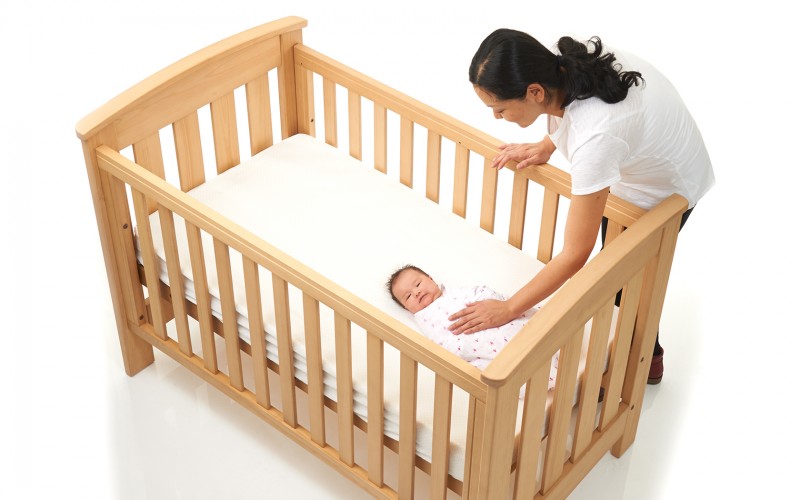Wrapping can be a useful method to assist baby to settle and stay asleep as it reduces crying time and episodes of waking. Wrapping has also been shown to provide stability, which may help to keep babies in the recommended back position.

Tummy sleeping increases the risk of SIDS and must be avoided. Wrapping a baby in the tummy position is even more dangerous as it prevents baby moving to a position of safety.
When wrapping a baby
Ensure that baby is positioned on the back with the feet at the bottom of the cot, that he/she is wrapped from below the neck to avoid covering his/her face and always sleep baby with face uncovered (no doonas, pillows, cot bumpers, lambswool or soft toys in the sleeping environment).
Use only lightweight wraps such as cotton or muslin (bunny rugs and blankets are not safe alternatives as they may cause overheating).
For wrapping to be effective, the wrap needs to be firm but not too tight. Techniques that use tight wrapping with legs straight and together increase the risk of abnormal hip development, while loose wraps are also hazardous as they can cover baby’s head and face.
Ensure that baby is not over dressed under the wrap. Use only nappy and singlet in warmer weather and dress baby in a lightweight grow suit in cooler weather.
When not to wrap baby
If you wrap your baby, consider baby’s stage of development. Leave arms free once the startle reflex disappears around 3 months. Most babies eventually resist being wrapped. Wrapping style should be appropriate for the baby’s developmental stage.
It is essential to discontinue wrapping as soon as baby starts showing signs that they can begin to roll, usually between 4-6 months of age but sometimes younger. Babies must not be wrapped if sharing a sleep surface with another person. Baby should not be wrapped while sleeping in a baby sleeping bag.
Last modified: 14/12/22
